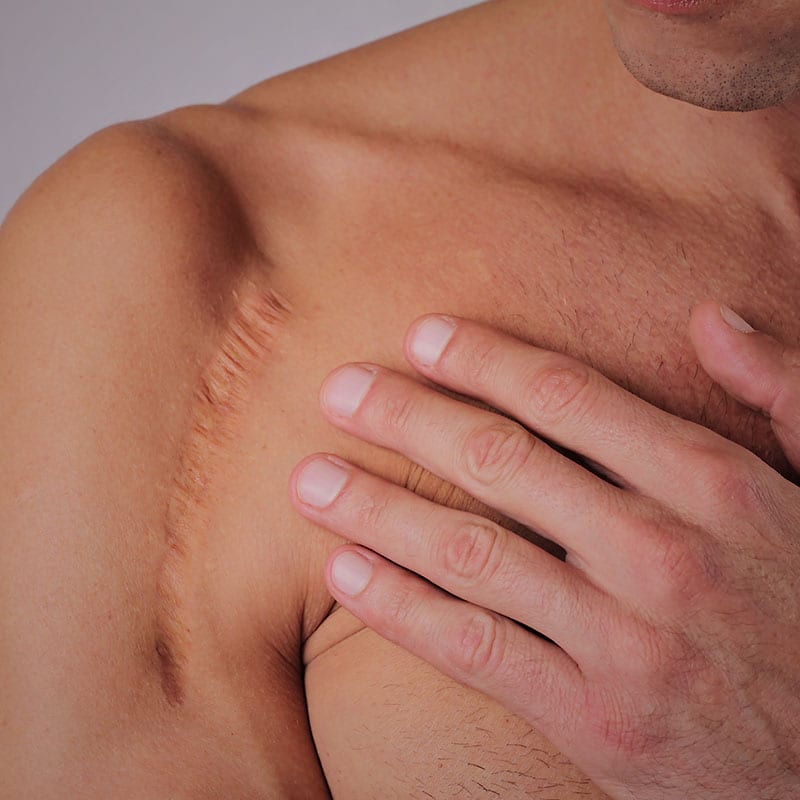Scar Revision
Abnormal healing resulting in poor quality scar can come after accidental injuries or following surgery. Scars may appear lumpy or wide and stretched or leave a contour defect on the skin surface and appear depressed or dented.
Not all scars can be improved by means of surgery.
Thickened and raised scars should be treated initially with massaging, application of pressure and occasionally injection of small amounts of steroids inside the scar itself. Keloids for example can become even worse with surgery.
Scars that can usually be improved are stretched or dented scars or these that are not in an ideal direction. These scars can be excised and re-sutured (scar revision).
No scar can be removed completely. The aim of the revision procedure is that the new scar will be of better quality.
The procedure can usually be done under local anaesthetic on an out-patient basis unless the scar is rather large or deep in which case a general anaesthetic will be required. Post-operative pain is usually minimal. As with any skin procedure the risks include post-operative bleeding or infection both of which can delay the healing process and affect the quality of the final scar.
Dissolving sutures are frequently used in the trunk and limbs and a light protective dressing is applied. Non-dissolving sutures are used in the face but stitch marks are much less likely to appear as sutures are removed early.
All new scars are initially red. Fading can take anything from 6 to 24 months depending on the location of the scar and the patient’s skin type.




